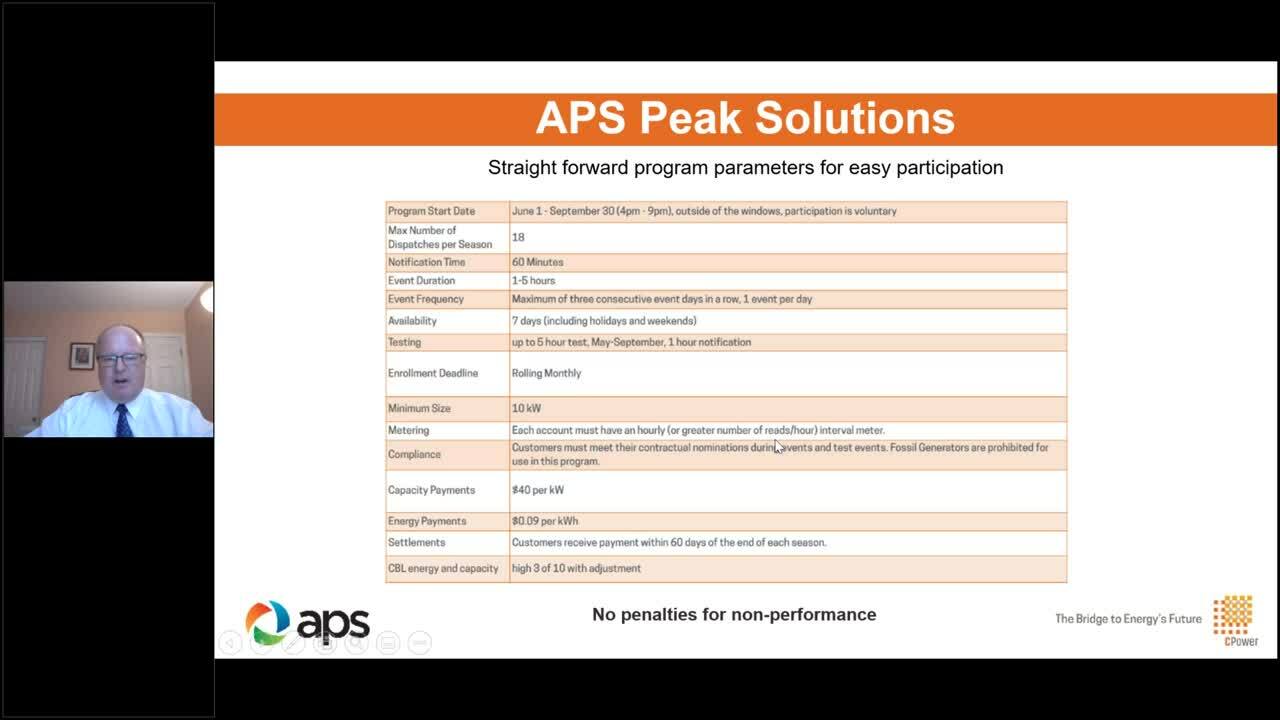NY Utility Con Edison Sees DERs and Demand Response Programs that Use Them in its Future (and Present)

Con Edison’s grid of the future aims to deliver 100% clean energy by 2040.
The New York electric utility in charge of delivering safe, reliable energy to 10 million people living in New York City and Westchester County knows full well what’s at stake during their drive to a cleaner, more dependable grid.
Like any utility in the country striving toward a future powered less from fossil resources and more from renewables and other clean sources, Con Edison must deal with the inherent intermittency issues renewable resources such as wind and solar present.
Unlike most utilities in the US, however, Con Edison has more citizens and businesses depending on them.
That’s why a key initiative of their plan to build a “resilient, 22nd-century electric grid” of the future involves significantly expanding distributed energy resources (DERs), which are small, decentralized, electrical systems that are connected to the grid and can consume, produce, or store electricity.
DERs, as regular readers of The Current likely know by now, include curtailed loads from commercial and industrial organizations participating in demand response programs, which pay organizations for using less energy when the grid is stressed due to high electrical usage or when electricity prices are high.
Con Edison has for years counted on demand response programs to help lower peak usage on its grid with popular demand response programs such as the Distribution Load Relief Program (DLRP) and the Commercial System Relief Program (CSRP), both of which were launched in 2016 and continue to be popular among participating organizations today.
In 2020, the New York Public Service Commission established two new demand response programs, Term-Dynamic Load Management (Term DLM) and Auto Dynamic Load Management (Auto DLM), to further help utilities in the Empire State reduce peak loads during times of high electrical use.
Term DLM and Auto DLM specifically aim to help New York reach its clean energy goals, which are among the most ambitious in the US, by allowing capacity from behind-the-meter DERs such as energy storage, on-site generators, CHP units, and more to participate in demand response.
Con Edison hopes the revenue earned by Term DLM participants inspires New York organizations in the utility’s territory to invest in DER technology. Marlon Argueta, Con Edison’s manager of demand response programs announced as much in a recent interview when he said he hopes “the revenue certainty the Term-and Auto-DLM programs provide will encourage participants to invest in battery storage and other clean energy technologies for demand response.”
It’s those clean technologies, Con Edison believes, that will help New York reach its clean energy goals. Those same technologies can help New York City organizations comply with climate-focused regulations such as Local Law 97, which establishes emissions regulations on buildings in the city over 25,000 square feet that must be complied with beginning in 2024.
An estimated 50,000 buildings in New York City stand to be affected by Local Law 97. Many are in the commercial sector and may require comprehensive retrofits, which can be partially or perhaps fully paid for with revenues earned from participating in Con Edison’s demand response programs.
Flexible consumer demand, which DERs certainly provide organizations that possess them, is helping to evolve the electrical grid from, in the words of senior advisor to the Regulatory Assistance Project (RAP) Mike Hogan, “a world where we forecasted demand and scheduled supply to a world where we will forecast supply and schedule demand.”
This grid of tomorrow where demand follows supply instead of the other way around as the case has been since the grid was invented is the grid of the future–not just for Con Edison, but for utilities and grid operators across the country.
Learn more about how CPower’s Building Management System-as-a-Service can turn your New York building into a smart building, lower your energy costs, and earn revenue for helping the grid.
US Electric Utilities and the Grid of the Future

An inherent flaw in any electrical grid lies in the inevitable truth that the entire grid system—from the generators to the transmission lines to the substations to the power lines and transformers outside of homes and businesses—must be sized to serve peak use.
For many grids in the US, peak energy use happens over just a few hours on hot summer days. In Massachusetts, for example, it has been estimated that the top 10% of high load hours during the year account for about 40% of the cost of operating the grid 1. Shaving electric use during these key hours of high usage can therefore have a significant benefit in reducing long-term electric rates.
The goal of utility demand response programs is to strategically reduce energy use at those peak times which, in turn, keeps overall costs (and rates) down by reducing the need for expensive and dirty peaker plants while also reducing the required size of grid infrastructure.
Demand response and traditional energy efficiency are viable tools through which utilities across the US plan to reduce peak usage and realize those savings for our customers.
The Road to Tomorrow: Possibilities and Challenges
There is still some debate over what the best path to the future may be and how quickly we can get there, but the end goal for many US electric utilities is clear. To address climate change and other environmental and equity issues, we need an environmentally sustainable power system.
For the Northeast, as for much of the country, this will mean integrating into our grids a lot more solar and wind power to complement existing hydro resources and hopefully (for those of us in the US Northeast) access to even more hydro resources from our Canadian friends.
Solar and wind are valuable and popular resources that should be encouraged during the grid’s transition from the way it was structured and operated for most of the 20th century to a tomorrow lush with sustainable possibilities.
The sun is not always shining, and the wind is not always blowing. For the grid to overcome the inherent intermittency of these clean renewable energy sources and evolve to a cleaner more efficient future, demand response will play a crucial role in balancing the use of electricity with its supply.
The Increasingly Important Role of Demand Response
Today, many demand response programs at the utility level are simple in design, yet effective in achieving results. Most utilities execute their DR programs on peak days in order to reduce peak usage. To attain the future we all desire, however, utilities will need to add new demand response programs to help balance the grid every day of the year.
Battery storage will also play a critical role in this transition to the future. At National Grid in the Northeast US, for example, battery storage is already an important part of the suite of demand response programs we use to manage peak usage on our electric grid.
Relying on storage alone to solve every peak issue, however, would be more expensive than if we were to also include other types of tried-and-true demand response strategies such as turning down HVAC, lighting, or process equipment during times of demand response participation.
This challenge will be best solved with each utility offering a diverse portfolio of DERs in diverse demand response programs to serve the needs of its evolving grid.
Creating a More Cost-Effective Grid at the Utility Level
Much has been made about the benefits to all customers for addressing climate change and other environmental problems. What hasn’t been shouted from the rooftops is the very real possibility that the grid of the future will also be cheaper and more equitable than what we’ve known in recent decades.
The cost of solar, wind, and batteries has dropped considerably in the last five years. These once cost-prohibitive resources are now among the cheapest resources available and have been seized upon by suppliers on the supply side of electricity’s exchange and consumers on the demand side.
Now more than ever, electric utilities across the US need demand response programs to better integrate these key resources into the grid so everyone can benefit from the reduced costs and lowered emissions they enable.
National Grid, like many utilities across the US in deregulated energy markets, is not allowed to own or operate power plants. The regulations that govern us and other utilities involve revenue decoupling mechanisms that ensure our utility’s profits are not tied to increasing electricity sales. Instead, our regulators have put other performance-based incentives in place for us to make sure that our interests always align with our customer’s interests.
Demand response and the rest of our energy efficiency portfolio are great examples of these incentives. As the saying goes, the cleanest kilowatt of electricity is the one you do NOT use. For decades, we and other utilities across the country have offered energy efficiency programs to our customers, because it is a lot cheaper to save energy than it is to build new power plants and grid infrastructure.
Financial Incentives as a Driver of Change
How do we get that to a lofty goal of having 100% of our electricity generated from renewables? It’s a complex answer which requires efforts on both the supply and demand sides.
The opportunities for both commercial and residential consumers to serve their clean and renewable loads back to the grid will likely thrive if the right incentives are in place.
For starters, utilities will need to introduce incentives to encourage more households and businesses to install behind-the-meter solar and storage while simultaneously incentivizing the acceleration of front-of-the-meter solar and wind farms.
That being said, there is a lot more electric utilities need to do to get the word out to our customers about existing incentives to adopt renewables. Many customers would likely move on this today if they knew how lucrative renewables can be and how much they help the environment.
Of course, the grid needs to be ready to accept all that new renewable generation. The challenge then for utilities is to develop customer-friendly programs that incentivize customers if they allow their utility to discharge and charge their batteries at the right times and tweak their inverter settings to improve power quality.
Utilities will also need to further develop the system used to manage distributed energy resources so that the right signals are sent at the right time to the right places on the grid in order to unlock the maximum benefit and reduce emissions and overall costs.
It’s an exciting time for electric utilities. The grid is evolving and we, along with our customers, are evolving with it, poised to do our part to help keep the power flowing, rates affordable, and the Earth plentiful during this important transition to energy’s sustainable future.
APS Peak Rewards for Education (Webinar)

The APS Peak Solutions demand response program offers schools, colleges, and universities the opportunity to reduce their electrical energy use during periods of high usage during the summer and rewards them with revenue payments. The education sector has the opportunity to help promote clean energy for all and receive financial incentives for participation that can be used toward energy or other organizational initiatives.
Reduce energy use, earn revenue, and support grid reliability.
Watch the brief ~30 minute discussion between CPower Energy Management and Osborn Elementary School District and learn:
- More about the Peak Solutions program and how to participate
- Energy reduction strategies for education that help mitigate staff and student disruption
- How much you can earn for participation
- The APS and CPower team that will support your performance
Demand-side 2021 Utilities: A Commercial and Industrial Guide to Managing Energy in 2021 (Webinar)

Across the US, electric utilities are introducing and/or expanding demand response programs to help reduce demand peaks in their service territories. In this webinar, CPower’s Peter Bergeron and National Grid’s Paul Wassink will give you an insider’s view of the emerging demand response programs and reveal how your organization can earn revenue by using less energy in times when the utility’s electrical demand is approaching its peak.
APS Peak Rewards (Webinar)

The APS Peak Solutions demand response program offers commercial energy users the opportunity to reduce their electrical energy use during periods of high usage during the summer and rewards them with revenue payments. Participants across all industry types can earn hundreds to hundreds of thousands of dollars depending on how much you are able to curtail when called upon.
Reduce energy use, earn revenue, and support grid reliability.
Join APS and CPower Energy Management for this 60-minute webinar and learn:
- More about the Peak Solutions program and how to participate
- Curtailment strategies to mitigate operational impact and comfort
- How much you can earn for participation
- The APS and CPower team that will support your performance
Arizona’s Largest Utility Ramps its Demand Response program to Pursue Carbon-Free Mission
The largest electric utility in Arizona is making strides toward a more sustainable future and it’s clear demand response is part of the plan.
Arizona Public Service (APS) is the owner and operator of the country’s largest producer of carbon-free electricity–the Palo Verde Generating Station.
Currently, the utility generates clean, reliable electricity for 1.3 million homes and businesses in 11 of Arizona’s 15 counties and boasts a current energy fuel mix that is 50 percent clean.
50 percent clean energy in 2021 is impressive enough, but APS CEO Jeff Guldner sees an even cleaner future and has pledged to cease all coal-fired generation in the APS service territory by 2031 and for the utility’s fuel mix to be 100 percent carbon-free by 2050.
To get there, APS plans to call on a generation portfolio that is 45 percent renewable in just nine years.
To help bridge the present and future, APS is counting on its own Peak Solutions demand response program to ensure its grid remains reliable when stressed with heavy electrical demand.
Launched in 2010, the Peak Solutions program engages commercial and industrial customers in voluntary energy conservation measures when demand for energy peaks on APS’s system, particularly during Arizona’s scorching summers.
The program also helps maintain lower-cost power for all customers.
As APS ramps up its drive to a carbon-free future, they’re also ramping up their demand response program and the financial rewards participating commercial and industrial organizations will earn for voluntarily reducing their electricity consumption when the demand on the APS grid is high.
The APS Peak Solutions aims to include participants both small and large evidenced by its minimum load commitment of just 10 kW instead of the more customary 50 kW minimum required by most commercial demand response programs in the US.
By not having any penalties for non-performance, another atypical demand response program parameter, APS is further making Peak Solutions attractive to organizations who have never before participated in demand response.
APS’s CEO Jeff Guldner knows that plans and programs aren’t enough to attain a sustainable future in Arizona. “Achieving and realizing the full benefits of a completely clean energy mix will take partnership,” he said in APS’s published clean energy commitment document, “It’s something for all of us, by all of us.”
To learn more about demand response and the APS Peak Solutions program, click here.







